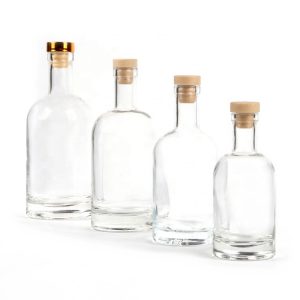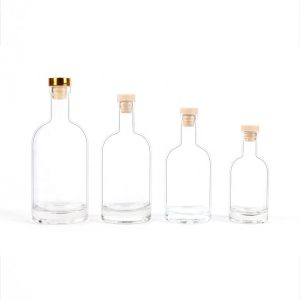Preserving with glass jars is a traditional and effective method of keeping food fresh for an extended period. The process typically involves canning or “jarring” foods by sealing them in glass jars and subjecting them to heat to kill any bacteria, yeasts, or molds that could spoil the food. Here’s a general overview of how to preserve food using glass jars:
1. Choose Appropriate Glass Jars:
- Select glass jars specifically designed for canning and preserving. Mason jars, canning jars, and other similar jars with two-piece lids (a flat metal lid and a screw band) are commonly used for this purpose.
2. Prepare the Jars:
- Wash the jars and lids with hot, soapy water and rinse them thoroughly. Inspect the jars for any chips or cracks, as damaged jars may not seal properly and could lead to spoilage.
- Submerge the jars in a pot of boiling water or place them in the dishwasher to sterilize them. Keep the jars hot until you’re ready to fill them.
3. Prepare the Food:
- Wash, peel (if necessary), and cut the food you want to preserve. For example, for canning fruits and vegetables, clean them thoroughly and cut them into appropriate sizes for the jars.
4. Fill the Jars:
- Using a canning funnel or ladle, carefully fill the hot, sterilized jars with the prepared food, leaving the recommended headspace (space between the food and the rim of the jar) as specified in the recipe.
5. Add Acid (If Required):
- Some recipes may call for the addition of acid (usually lemon juice) to ensure the proper preservation of low-acid foods. This helps create an acidic environment that prevents the growth of harmful bacteria like Clostridium botulinum.
6. Seal the Jars:
- Place the flat metal lid on top of the filled jar and then screw on the band until it’s just fingertip-tight. This allows air to escape during the canning process, creating a vacuum seal when the jars cool.
7. Process the Jars:
- Depending on the recipe and food type, you’ll need to process the filled and sealed jars in either a water bath canner or a pressure canner. The processing time and method vary depending on the acidity and density of the food.
8. Cool and Check the Seal:
- After processing, remove the jars from the canner and place them on a towel or cooling rack to cool. As the jars cool, you should hear a popping sound, indicating that they have successfully sealed. After cooling, check the seals by pressing down on the center of the lids. If they don’t move or make a popping sound, the jars are properly sealed.
9. Label and Store:
- Label the jars with the name of the preserved food and the date it was canned. Store the sealed jars in a cool, dark place, such as a pantry, for long-term storage.
It’s essential to follow proper canning guidelines, including recommended processing times and safety precautions, to ensure that the preserved food is safe to eat. Always use trusted canning recipes and up-to-date canning resources to avoid potential foodborne illnesses.







